Copenhagen is UNESCO-UIA World Capital of Architecture until 2026
Copenhagen manages a one-year programme with a focus on the future of architecture. Discover the city’s unique approach to citizen-centric urban desig...
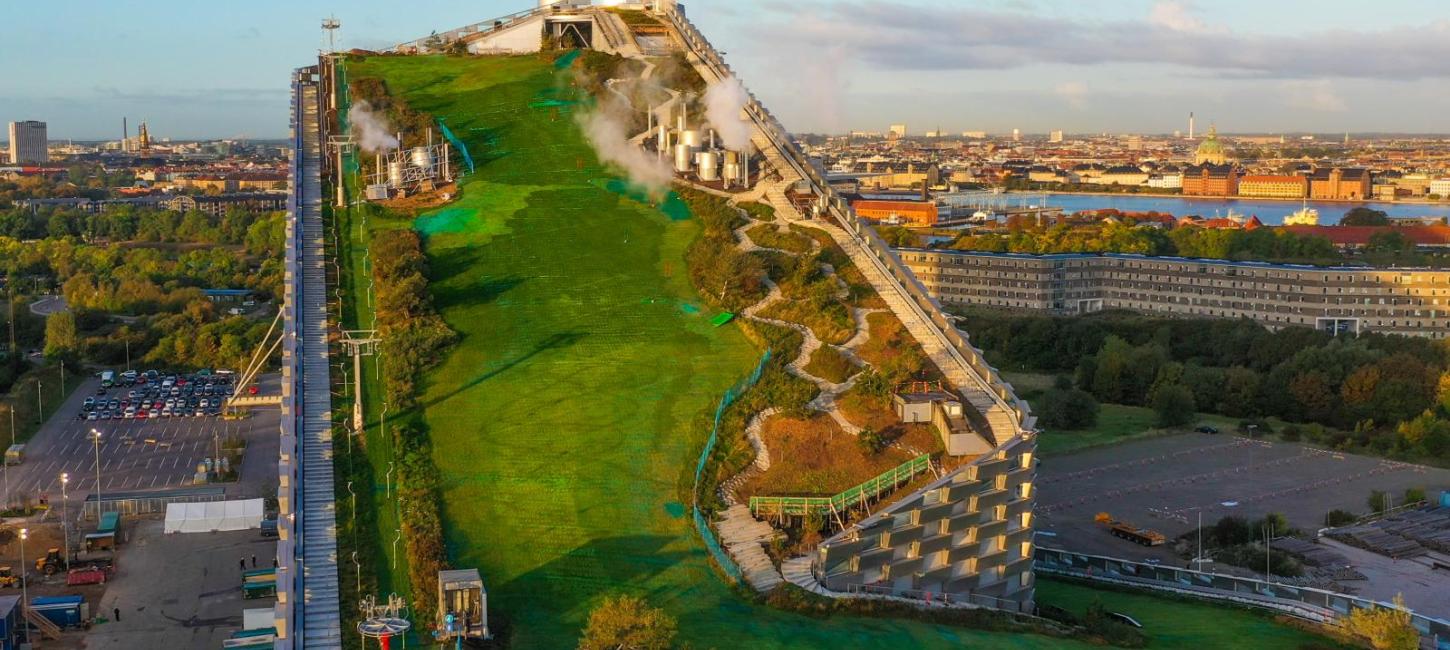
Architecture in Copenhagen includes multi-use spaces, ultra-modern upgrades on historical buildings, and structures that employ out of the box creative and playful solutions to solve distinctly tricky problems.
There is a certain look and feel that characterises modern Danish buildings and it comes directly from Danish society. It relates closely to the country’s democratic ideals: buildings are designed for people first and aim to make their everyday lives safer, healthier, and more enjoyable. They feature natural light, and sustainable energy systems and put the enjoyment of the environment as a high priority.
That enjoyment is clear in the urban planning and architecture of Copenhagen as shaped by Danish architect and consultant Jan Gehl, who focused on improving the quality of urban life by reorientating streets to the needs of pedestrians and cyclists in the 1970s. It’s easy to experience as a visitor – just stroll down Strøget, our long pedestrianised street, or rent a bike and cycle around the city.
Unique to Denmark, the school of architecture is at the Royal Academy of Art, bringing more aesthetic attention to the study and development of the subject. It’s another of the many reasons why our buildings look and feel so unique - modern and older ones alike - and why Copenhagen is voted World Capital of Architecture in 2023.
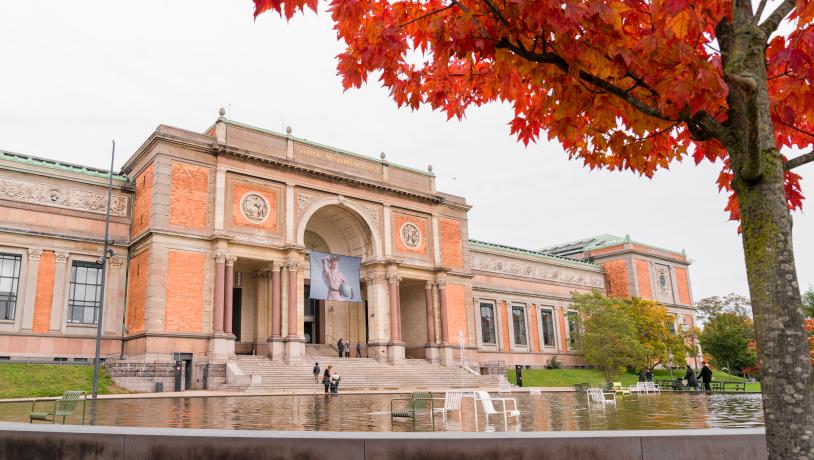
Photo:Daniel Rasmussen
Take a look at the following ten iconic Copenhagen buildings and discover how playful, light-filled, healthy and people-focused architecture can be in Copenhagen.
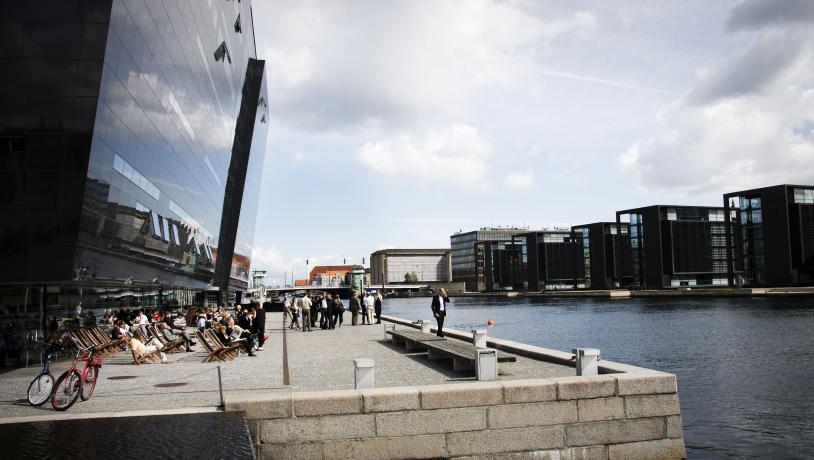
Designed by Copenhagen firm Schmidt Hammer Lassen, the extension to the 1906 Royal Library was finished in 1999 and is nicknamed ‘The Black Diamond’ for its dark, shiny, faceted shape that reflects the sea and sky from the waterfront. The idea of juxtaposing this ultra-modern block with the older red-brick building is deliberately radical: it marks the transition from a traditional library to a future-focused cultural centre.
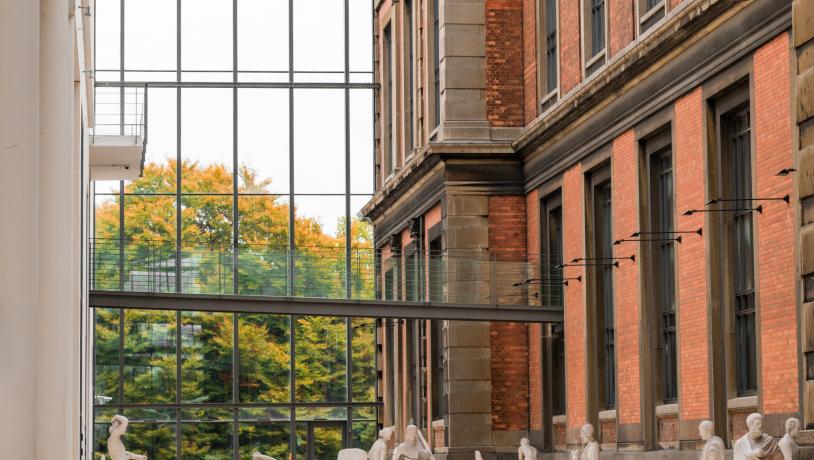
Denmark’s largest art museum SMK is another marriage of old and new, and an attraction in itself, located in central Copenhagen. The modernist extension by C.F. Møller in 1998 added much more than extra exhibition space to the gallery, as it opened up the building to the surrounding parkland, playing with the grandeur of the original 1896 building and the idea of making the former royal collection accessible to the wider public. It also draws in light to the whole building.

Ordrupgaard Museum houses French Impressionist art and Danish art from the Golden Age in the lush area north of central Copenhagen. It takes an elegant 19th-century mansion by Danish architect Gotfred Tvede and furniture architect Finn Juhl’s home next door as its starting point and has added two modernist wings, one by Zaha Hadid in 2005 and another by Norwegian architects Snøhetta in 2021. Hadid’s wing is nicknamed ‘the beached whale’ for its organic concrete shape and was the architect’s first building in Northern Europe; Snøhetta’s wing houses French Impressionists paintings and absorbs and reflects the changing light outside, echoing the world of the paintings it displays.

Grundtvig's Church is a gothic cathedral in Bispebjerg, north Copenhagen, was created in commemoration of the great Danish priest, poet, and reformer N.F.S. Grundtvig (1783-1882). Architect and designer Kaare Klint (1888-1954) completed the building in 1940 after his father, the original architect, died. He also designed the chairs, which have become a Danish design classic. The impressive building exudes a special sense of calm and is made from handmade yellow bricks from Zealand, using restraint, natural light and clean lines throughout.

The University of Copenhagen’s award-winning tower houses parts of the Faculty of Health and Medical Sciences and is future-focused, using sustainable solutions all the way to the top of its 75-metre tower in Nørrebro. Designed by C.F. Møller, it has won several prizes for its innovative and sustainable design, which include rainwater recycling and energy-efficient laboratories.
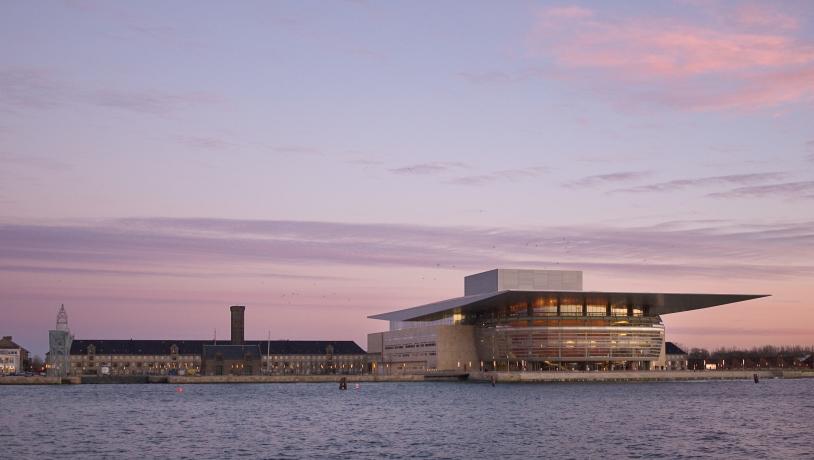
Danish architect Henning Larsen designed the Opera House, a bold and dramatic building on Copenhagen's harbourfront and one of the city’s largest buildings. A number of Danish artists have contributed to the decor, among them Per Kirkeby who has created four bronze reliefs, and Danish-Icelandic artist Olafur Eliasson who has contributed the three light sculptures for the foyer. In 2023, Cobe’s Opera Park will open, a prominent public park designed with inspiration from the European capital’s historical gardens with winding paths and pavilions.
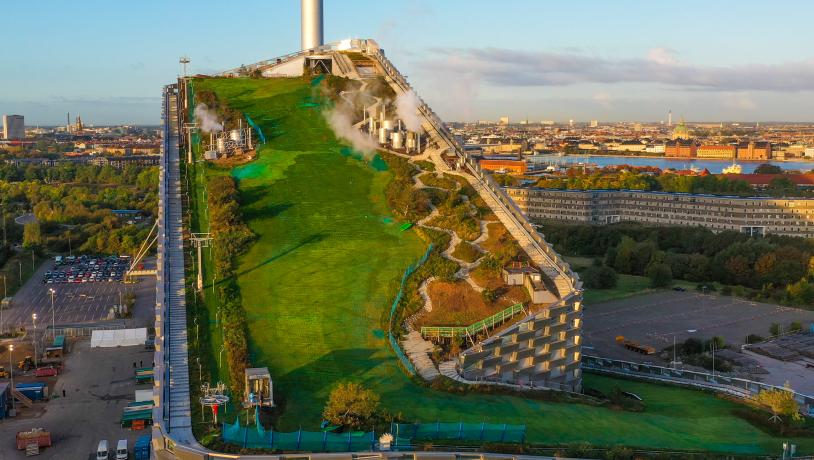
CopenHill, an artificial ski slope and recreational hiking area built on top of the new waste management centre in Refshaleøen, opened in 2019. It’s a great example of architect Bjarke Ingels Group’s definition of ‘hedonistic sustainability’ – its philosophy that sustainability should also be fun. Combined, the playful design and the ski slope on top represents a new way to think about urban resource handling and build waste-to-energy plants that are welcomed by city inhabitants.

This former grain silo in the post-industrial harbour area of Nordhavn was transformed into a dramatic steel tower by COBE in 2017 with an angular faceted exterior of galvanised steel lending a raw and edgy appeal. The avant-garde building houses residential apartments and a stunning restaurant serving up fine dining and views as far as Sweden from the 17th floor. Inside, it retains a post-industrial feel with exposed concrete walls, further celebrating the idea of transforming industrial trash into modern-day treasure.
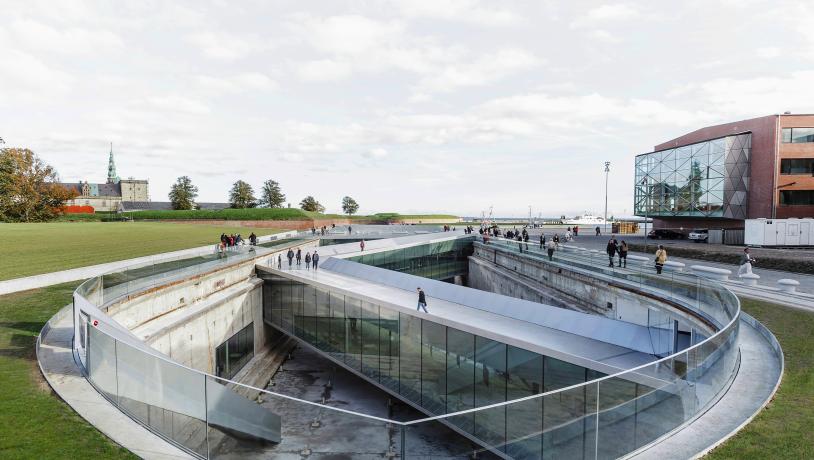
The challenge was to create a maritime museum in Helsingør, north of Copenhagen, that did not disturb the view of the town’s UNESCO-listed castle. Bjarke Ingels Group’s solution was this: an underground museum in the shape of a ship built in the town’s former dry dock. It’s a staggering tour de force telling stories about shipping and seafaring in Denmark using an innovative form that celebrates the history and scale of shipbuilding itself.
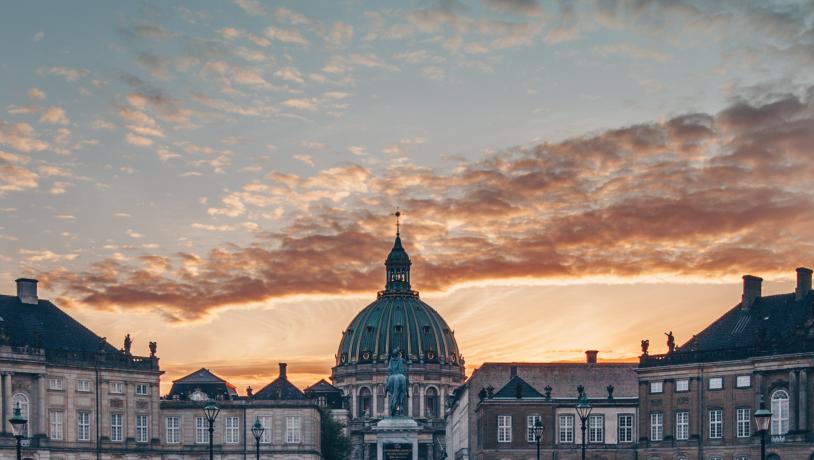
Home to Denmark’s royal family, as well as a museum about the monarchy, Amalienborg comprises four Rococo palaces set on a square in the heart of the city. Known as one of the best examples of Rococo architecture in Europe, it was designed by state architect Nicolai Eigtved in the 1750s and is a major classical work in Danish architecture built during the reign of King Frederik V. Eigtved also designed the adjacent Marble Church, a grand copper-domed church a street away as well as the Frederikstaden district Frederiks Hospital, nowadays home to the just-renovated Designmuseum Denmark. The architect played an important role in the establishment of the Royal Danish Academy.
Download a selection of pictures related to architecture in Copenhagen. Press photos - architectural landmarks in Copenhagen. The photographer must be credited.

Senior Manager – Press & PR